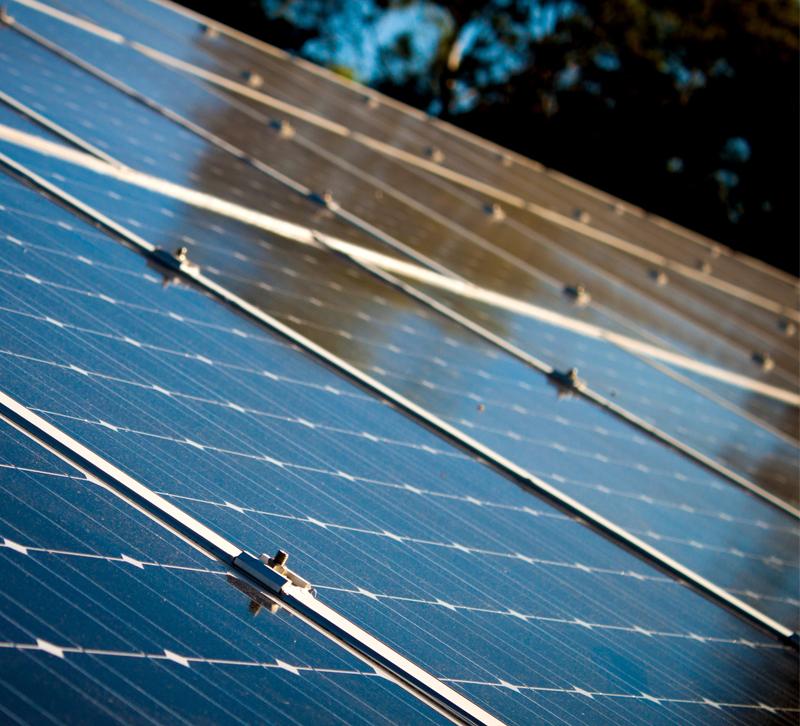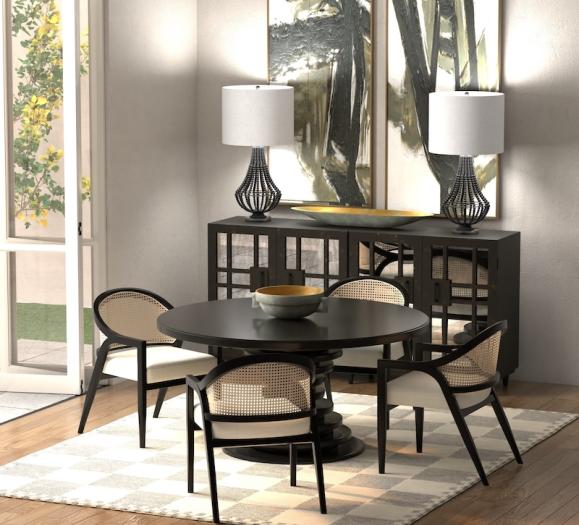For the average consumer, going green means dropping a few cans and papers in a recycling bin and maybe investing in an LED bulb or two, but as Jessica McNaughton, President at sustainable building material supplier CaraGreen, will tell you, recycling represents one very small part of the going green equation, and if more consumers understood that, the amount of plastic recycled each year would be way above its current 9 percent average.
Sound surprising? Then get ready for a slew of surprising information on sustainability in CaraGreen's new podcast, Build Green Live Green. The podcast, which launched this month, tackles the green product industry, educates listeners about sustainable design and weighs in on how current and proposed policies may affect the industry (hint: tariffs will likely affect this industry too).
Read on to hear from McNaughton herself on why the podcast means so much and what designers and retailers can take from it.
Furniture, Lighting & Decor: What made you decide to do a podcast as opposed to a blog, video, etc?
JM: We currently have a blog that covers industry topics, but we wanted to elaborate on the topics and make them more conversational. We also realize that society is on the go, and audio is becoming a huge part of people's daily commute. Podcasts play a big part in where people are getting information and education. Devices like Amazon Alexa and Google Home are part of daily life now. My daughter drew a picture of our family, and it had the kids, my husband and Alexa in it.
Audio is becoming ubiquitous and lets us multitask and learn at the same time. With the next generation coming into the workforce, headphones, commutes and audio are converging and podcasts are a brilliant way to inform these environmentally savvy consumers and employees. Build Green Live Green was established with those needs in mind.
FL&D: Your podcast talks through the language and terminology of sustainability, terms like "all-natural" that don't have a true definition when used on a box. Why do you think so much misinformation exists surrounding sustainability terms?
JM: "Green" fever hit with a vengeance in 2008, and companies started slapping all sorts of labels and certifications on things without really qualifying them. The word lost its meaning and "greenwashing" became a household term, wiping out the valiant efforts of truly sustainable brands. The lack of governing of terms like "organic" and "all-natural" has caused consumer confusion and copious amount of misleading claims. Build Green Live Green attempts to weed through some of that and provide some guidance on what you can do to make good decisions at work and/or at home.
FL&D: Your third episode dives in on China's new policy of not accepting recycling from the U.S. and other countries. How will this policy be affected by the U.S. tariffs on imported Chinese goods and what is the potential outcome next year when that tariff jumps to 25 percent?
JM: The recycling ban and the tariffs are interrelated in a very complicated way. The recycling ban is really gumming up the U.S. waste stream and causing massive amounts of goods that would have been recycled to end up in landfills across the U.S. The problem will get worse before it gets better.
The tariffs on Chinese goods compound the problem because building costs are much higher, as many of the materials used to build here in the U.S. come from China. A lot of steel is recycled, and a lot of steel comes from China. China was buying U.S. scrap metal. So now, they are not buying our scrap metal, because of the ban, local costs of steel in China could be higher, and then there is a tariff on top of that. So the cost of steel is even greater than just the tariff.
This is just one example, there are several others, even more complex.
FL&D: For designers and retailers looking to adopt more sustainable practices in their businesses, what would you recommend?
JM: Look at the Living Building Challenge and WELL Building Standards. These may seem Utopian in their goals, but they offer a look at where we are headed. Design may not get there right away, but take cues from the standards and take steps to get there. Biophilic Design is a hot topic right now, as is Biomimicry. Reach out to companies like CaraGreen that offer free, for-credit courses that educate you on these design techniques. Look at products made in the U.S., with recycled content and environmental stewardship.
The intersection of the recycling ban, resulting in a need for better management of our waste, coupled with the tariffs on building materials create the perfect opportunity for products with recycled content, made in the USA.
FL&D: What kinds of topics can we expect from your podcast in the future?
JM: You tell us! We want the industry to tell us what they want to hear more about. Our plan is to explore topics like "5 Ways to Green Your Office" or "5 Easy Ways to Start Making an Environmental Impact Now." We also want to explore innovative new materials like sintered stone, which can "eat" pollution on building exteriors. One fun topic we discussed today was a Build Green Live Green "kids" edition, where we here about environmental issues from the ones that will most be affected by the decisions we make today: our children.
To tune into Build Green, Live Green, check out CaraGreen's website or subscribe to it on iTunes or Soundcloud.







